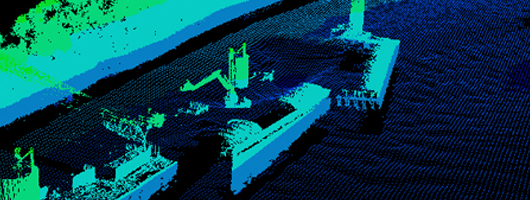
Solutions
Just as there is no one problem, there is no one solution. The Middle Mississippi is a dynamic and fast-changing stretch of river. The Northern half (mile 300 to 184) contains locks and dams while the lower half (mile 184 to 0) is open river. Each changing condition on the river creates the need for different solutions. Each solution, in its place, creates the opportunity for a diversity of habitats.
From the start of the inquiry, the Middle Mississippi was studied as an entire river system where different structures were designed to fit specific locations on the river. Each structure was evaluated as to its ability to improve biological habitat and meet navigation goals, within the entire reach of the river
Before being installed in the river, many newly designed structures were model tested using either traditional large models or new HSR Modeling technology. Model testing evaluates various alterations and allows engineers to try nontraditional design approaches without the cost risks associated with field testing
Once the structure is in place and its navigation effectiveness evaluated, a team of biologists assesses its environmental effectiveness by analyzing the number of species found at each structure
Primary structural designs include:
- Notched Dikes
- Stepped-Up Dikes
- Revetments
- Off Bankline Revetments
- Chevron Dikes
- Side Channel Improvements
- Bendway Weirs
- Notched Closure Structures
- Hard Points in Side Channels
Hydraulic Sediment Response (HSR) modeling
Hydraulic Sediment Response (HSR) modeling is extremely small scale physical sediment transport modeling. The technology was developed by the Corps of Engineers for use in studying the Mississippi River. Engineers are now able to replicate the mechanics of an actual river or stream on an area the size of a normal table top. Since the HSR Model is much smaller than a typical large model, this presents the possibility of widespread usage by engineers around the country. The miniature scale not only allows significantly greater speed and accuracy by which solutions to problems can be achieved, but drastically reduces the cost of a typical sedimentation study. This enables the opportunity to incorporate environmental design into engineering design solutions. Environmental problems that would not have been modeled on a large scale in the past may now are modeled on a micro scale. Unreliable and complex equations, construction experiments in the river, and large expensive models are now things of the past. Today, any river or stream can be replicated and studied with amazing simplicity.
Using HSR Modeling technology, an innovative engineering or biological design can be model tested, evaluated, and constructed in the actual river or stream within a few short months. Such progressive, high speed design and construction is unprecedented in the field of river engineering.
Micro controlled automation combined with highly accurate measurement devices are the keys to this technology. The hydraulic processes of a river or stream under study are replicated by employing a series of integrated process control valves, centrifugal pumps, micro level measurement gauges, and customized computer hardware and software. These devices allow the engineer to automatically control the flow of water and sediment through the model. The engineer is then able to allow the natural, complex hydraulic principals of moving water and sediment develop a duplicate bed form of the actual river in the HSR Model. A high resolution three-dimensional laser scanner is then employed to collect bed topography data on the HSR Model.
